1. Specifiers - understand the historical time line/personal history
1.1. with anxious distress
1.1.1. anxiety symptoms
1.1.2. sometimes need to deal with anxiety (mindfulness, self care etc) before you can treat with CBT etc.
1.2. with mixed features. query bipolar?
1.2.1. manic/hypomanic symptoms
1.2.1.1. during, not interspersed. predictor of bipolar.
1.3. with melancholic features
1.3.1. loss of pleasure or reactivity to pleasurable activities
1.4. with atypical features
1.5. with psychotic features
1.6. with catatonia
1.7. with peripartum onset
1.7.1. during pregnancy or 4 weeks following delivery.
1.8. with seasonal pattern
2. Current ICD10
2.1. Mood Disorders
2.1.1. Bipolar affective disorder
2.1.2. Depressive episodes
2.1.3. Recurrent depressive disorder
2.1.4. Persistent mood (affective) disorders
2.1.4.1. Cyclothymia
2.1.4.2. dysthymia
3. Differential didagnosis
3.1. manic episodes with irritable mood or mixed episodes
3.1.1. difficult to determine, need to carefully look at manic symptoms
3.1.2. risky behaviour - sex, shopping, spending sprees. impulsivity, lack of understanding consequences of their actions long term.
3.2. mood disorder due to another medical condition
3.2.1. look for drugs ,medications toxins
3.3. ADHD
3.3.1. grumpy and on the go irritability and impulsevness.
3.4. adjustment disorder with depressed mood - stress related disorder related to a specific event - divorce, move,
3.5. sadness
4. Epidemiology
4.1. Prevalence
4.1.1. most commonly diagnosed of all MH problems
4.1.2. approx 63% of ATSO presenting to Aboriginal medical servces
4.1.3. suicide rates men 15-24 in rural areas
4.1.4. PDD much lower than depression
4.2. onset
4.2.1. early onset
4.2.1.1. less than 20 years of age, more malignant course than later onset
4.2.2. later onset
4.2.2.1. emerge mid 30's
4.3. cohort effect
4.3.1. more prevalent in younger generation
4.4. course
4.4.1. MDD recurrent have it once 36.7% of experiencing it again
4.4.1.1. 2nd episode 45% chance of developing 3rd
4.5. chronicity
4.6. sex diffferences
4.7. comorbidity
4.8. prognosis
4.8.1. best prognosis when few stressful events, social support networks
5. Cognitive distortions
5.1. all ornothing thinking
5.2. arbitrary inference
5.3. over generalisation
5.4. selective abstraction
5.5. magnificaiton/minimisation
5.6. personalisation
5.7. emotional reasoning
6. Examples
6.1. Disruptive mood dysregulation disorder
6.1.1. child
6.1.1.1. referring to the presentation of children with persistent irritability and frequent episodes of extreme behavioural; dyscontrol is added to the depressive disorders for children up to 12 years of age.
6.1.2. adult
6.2. MDD
6.2.1. discrete episodes of at least 2 weeks duration involving clear cut changes in affect, cognition, neurovegetative functions and inter-episode remissions.
6.3. PDD - dysthymia
6.3.1. mood distrubance continues for at least 2 years in adults and one year in children.
6.4. premenstrual dysphoric disorder
6.4.1. expression of mood lability, irritability, dysphoria and anxiety symptoms that occur repeatedly during the premenstrual phase and remit after the onset of menses or shortly thereafter.
6.4.1.1. Can be accompanied by physical and behavioural symptoms
6.4.1.2. Symptoms must have occurred in most cycles over a year and effected work or social functioning.
6.4.1.3. Symptoms often peak at the onset of menses.
6.5. Substance/medication induced depressive disorder
6.5.1. includes symptoms of a depressive disorder but are associated with the ingestion, injection or inhalation of a substance and depressive symptoms persist beyond the expected length of the physiological effects, intoxication or withdrawal period.
6.6. depressive disorder due to another medical condition
6.6.1. prominent and persistent period of depressed mood or diminished interest in almost all activities that is related to the direct physiological effects of another medical condition.
6.6.1.1. Establish the presence of another medical condition.
6.7. other specified depressive disorder
6.7.1. disorders that do not meet the full criteria for any of the depressive disorders diagnostic class.
6.7.1.1. recurrent brief depression,
6.7.1.2. short duration depressive episode 4-13 days,
6.7.1.3. depressive episode with insufficient symptoms
6.8. Unspecified depressive disorder
6.8.1. applies to presentations in which symptoms characteristic of a depressive disorder that cause clinically significant distress or impairment predominate but do not meet the criteria for any of the depressive disorders diagnostic class. Used when you do not want to specify the reason the criteria is not met (compared with other specified depressive disorder). Often used in emergency settings where insufficient info for a specific diagnosis.
7. Common features
7.1. presence of sad, empty irritable mood
7.2. accompanied by somatic or cognitive changes that significantly affect the ability to function.
8. Differences
8.1. issues of duration
8.2. timing
8.3. presumed etiology
9. Diagnostic considerations
9.1. Medical illnesses
9.1.1. hypothyroidism
9.1.2. diabetes
9.1.3. Parkinson's
9.1.4. stroke
9.1.5. pancreatic cancer
9.1.5.1. heart disease
9.2. females
9.2.1. low iron
9.2.2. mensturation
9.2.3. endo
9.2.4. PCOS
9.3. drugs and alcohol
9.3.1. antihistamines
9.4. Grief and bereavement
9.5. older persons - less likely to report feeling sad depressed, guilty. More likely to report somatic symptoms.
10. Aetiology
10.1. Behavioural models
10.1.1. Lewinsohn's Behavioural model and revised model.
10.1.2. Coynes interpersonal model.
10.2. cognitive model
10.2.1. Beck's Cognitive model of depression
10.2.2. Seligman's learned helplessness theory
10.3. biological
10.3.1. genes
10.3.2. 7-30% in first degree relatives
10.3.3. neurochemistry
10.3.3.1. low serotonin, norepinephrine and dopamine cause depression
10.3.4. neuroendocrine
10.3.4.1. cortisol hypersecretion
10.4. sex differences
10.4.1. report bias.
10.4.2. hormonal explanations
10.4.3. sex role explanation
10.4.4. Nolen - Hoeksema Response Theory
